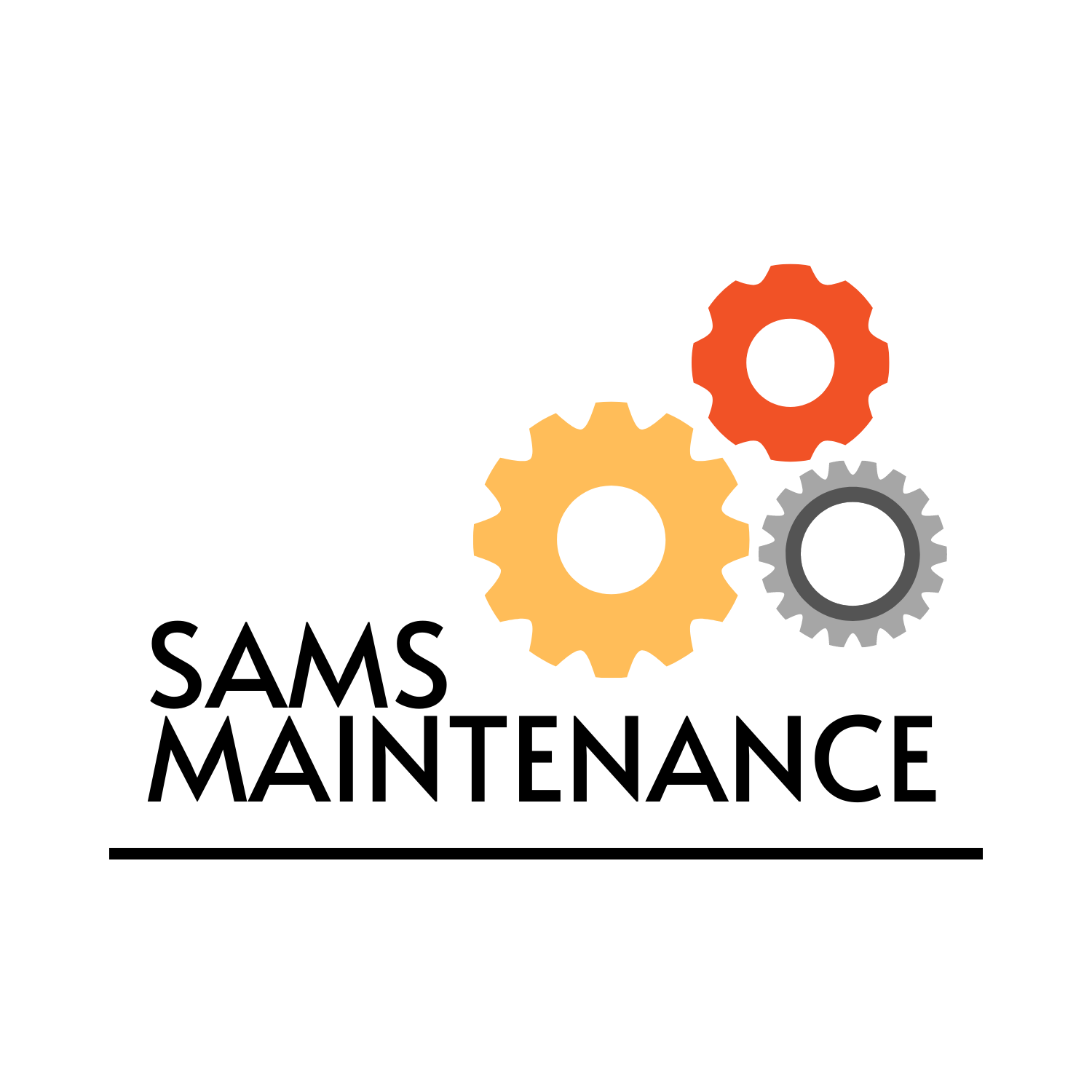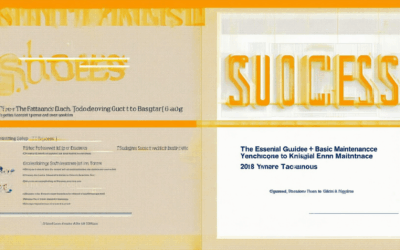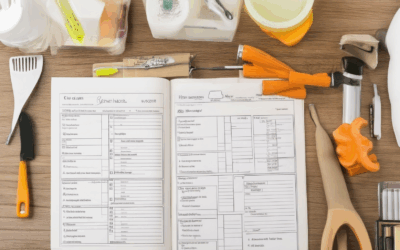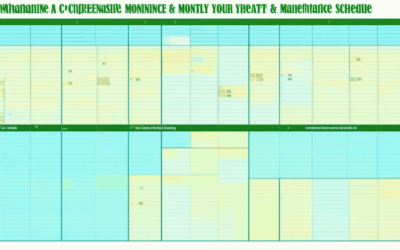Maintaining a house can seem daunting, especially when juggling multiple responsibilities. However, adopting a structured approach to monthly house upkeep can make all the difference. Understanding the costs involved and knowing which tasks require attention each month can help you stay ahead of potential issues before they escalate. Whether you’re new to homeownership or looking to refine your current routine, having a comprehensive monthly house upkeep checklist can streamline the process and help you address everything from minor repairs to seasonal tasks. This guide will walk you through the key areas to inspect, common maintenance tasks, and budget tips, providing a clear roadmap for keeping your home in top condition.
Key Takeaways
– Master the 1% Rule for Home Maintenance: Set aside 1% of your home’s purchase price annually to build a reserve fund for unexpected repairs.
– Budget Strategically: Aim to save 1% to 2% of your home’s value yearly, allocating 30% to critical systems like roofing, plumbing, and HVAC.
– Regular Maintenance is Key: Schedule tasks monthly, quarterly, semi-annually, and annually to prevent costly issues and extend your home’s lifespan.
– Consider Home Specifics: Evaluate factors like age, condition, and unique systems to adjust your maintenance plan.
– Prioritize and Prepare: Address minor issues early and explore maintenance insurance to enhance your strategy.

How Much Does It Cost to Maintain a House Per Month?
Maintaining a house involves various recurring and occasional expenses that can significantly impact your monthly budget. Here’s a breakdown of the typical costs associated with maintaining a home:
- Utilities : This includes water, electricity, gas, and trash services. Costs vary by location and usage.
- Property Taxes : Typically billed annually but can be factored into a monthly budget.
- Home Insurance : Protects against damage or theft and varies based on factors like location and coverage limits.
- Repairs and Replacements : Set aside funds for unexpected issues like appliance failures or roof leaks.
- Lawn Care and Exterior Maintenance : Includes landscaping, fencing, and painting, which can add up quickly.
- Interior Maintenance : Covers cleaning supplies/services, plumbing, and flooring maintenance.
- Additional Expenses : Security systems, smart home devices, or energy-efficient upgrades may also be considerations.
To provide a clearer picture, here are average monthly maintenance costs for different housing types:
- Studio Apartment : $200 – $400/month
- Family Home : $500 – $1,500/month
By understanding these costs and prioritizing budget allocation, homeowners can better manage their finances and ensure their property remains in good condition. Regularly reviewing and adjusting the maintenance budget can help prevent unexpected expenses and promote long-term financial stability.
What is Normal Maintenance on a House?
Normal maintenance on a house involves a combination of routine tasks that ensure the property remains in good condition, prevents costly repairs, and prolongs its lifespan. Here’s a breakdown of essential maintenance activities:
Seasonal Tasks
- Spring Cleaning : Check for damage to the roof, gutters, and windows. Clean out debris from gutters and downspouts to prevent water buildup. Inspect walkways and driveways for cracks or damage.
- Fall Preparation : Clear leaves from gutters and ensure they are free from blockages. Check the chimney for cracks or animal intrusion. Trim trees and bushes to prevent branches from touching the roof or power lines.
Exterior Maintenance
- Painting and Staining : Regularly repaint exterior surfaces, including fences, decks, and siding, to maintain curb appeal and protect against weather damage.
- Deck and Porch Care : Inspect for loose boards, rot, or warping. Sand and refinish as needed. Keep deck furniture clean and stored properly during inclement weather.
- Roof Inspection : Look for missing shingles, flashing issues, or signs of wear. Address any problems promptly to prevent further damage.
Interior Maintenance
- Air Filter Replacement : Change furnace and AC filters monthly to ensure efficient operation and indoor air quality.
- Appliance Checks : Test smoke detectors and carbon monoxide alarms annually. Inspect major appliances like refrigerators, ovens, and water heaters for proper function and safety.
Landscaping
- Lawn Care : Mow, edge, and fertilize grass regularly. Trim shrubs and trees to maintain shape and health.
- Irrigation System : Check for leaks or malfunctioning sprinklers. Adjust timers to ensure proper watering without waste.
Plumbing and HVAC
- Pipe Inspections : Use a drain snake or professional to clear slow-moving drains. Check for leaks under sinks, around pipes, and near water heaters.
- AC and Heating Service : Schedule annual tune-ups to ensure optimal performance and energy efficiency. Replace old thermostats with programmable ones for better control.
Electrical Systems
- Outlet Checks : Test all electrical outlets and switches to ensure they are functioning properly. Look for tripped breakers or flickering lights.
- GFCI Outlets : Replace GFCI outlets every few years to maintain protection against electrical hazards.
Fire Safety
- ** Chimney Inspections**: Hire a professional to inspect chimneys and flues for obstructions or damage. Clean chimneys annually to prevent fire hazards.
- ** Smoke Detectors**: Replace batteries in smoke detectors and carbon monoxide detectors annually.
Documented Maintenance
- Maintenance Logs : Keep a record of all maintenance tasks performed, including dates and descriptions. This helps track the condition of the home over time and ensures nothing is overlooked.
By staying proactive with these maintenance tasks, homeowners can enjoy a safer, more comfortable living environment and save money in the long run by preventing unexpected repair costs.

Creating a Maintenance Plan for Your House
A well-structured maintenance plan for your house ensures longevity and functionality. Here’s a comprehensive guide to help you get started:
Exterior Maintenance
- Roof Inspection: Check for leaks, missing shingles, or damaged flashing. Inspect twice a year, preferably in spring and fall.
- Siding Check: Look for cracks, peeling paint, or rot. Address issues promptly to prevent further damage.
- Gutter Cleaning: Remove debris and ensure proper drainage to prevent water damage. Clean at least twice a year.
Interior Systems
- HVAC Service: Schedule annual maintenance to ensure optimal performance and energy efficiency. Replace filters regularly.
- Plumbing Check: Look for leaks or corrosion. Test water pressure and inspect pipes for wear. Quarterly checks recommended.
- Electrical Systems: Test sockets, switches, and wiring. Ensure all circuits are functioning properly. Check quarterly.
Landscape Maintenance
- Tree and Shrub Trimming: Trim trees and shrubs to prevent damage to your house or power lines. Conduct this task seasonally.
- Lawn Care: Check for pests, diseases, or dead spots. Schedule treatments as needed and adjust the sprinkler system regularly.
House Interior
- Attic and Basement Checks: Inspect for pests, moisture, or structural issues. Address problems immediately to maintain safety and health.
- Crawl Space Inspections: Clean debris and check for signs of pests or moisture. Ensure vents and access doors are in good condition.
Kitchen and Bathroom Maintenance
- Leak Detection: Check under sinks and around tubs for water leaks. Fix minor issues before they escalate.
- Appliance Functionality: Test dishwashers, refrigerators, and garbage disposal units monthly to ensure proper operation.
Fire Safety
- Smoke Detector Testing: Replace batteries and test functionality monthly. Ensure all detectors are working properly.
- Carbon Monoxide Detector Checks: Test annually and replace detectors every 5-10 years as recommended.
- Fire Extinguisher Inspections: Check expiration dates and function tests. Ensure it’s accessible and everyone knows how to use it.
Documentation and Budgeting
- Keep Records: Maintain a log of all maintenance activities, including dates, tasks performed, and costs incurred.
- Budget Planning: Set aside funds for regular maintenance and emergencies. Track expenses to stay within budget.
Professional Consultation
- Expert Inspections: Consider hiring professionals for tasks like HVAC system inspections or plumbing issues to ensure accuracy and safety.
- Regular Servicing: Schedule annual services for major systems to maintain peak performance and reliability.
By following this maintenance plan, you can extend the life of your home, reduce repair costs, and ensure a safe and comfortable living environment. Regular checks and timely repairs are key to maintaining the integrity of your property.

Understanding the 1% Rule for Home Maintenance
The 1% rule for home maintenance is a simple yet effective strategy to prepare for unexpected repair costs. Here’s a breakdown of what it involves:
- 1% of the Home’s Purchase Price : Set aside 1% of the total price you paid for your home each year for maintenance. This creates a reserve fund to cover unforeseen repair costs.
- Annual Budget Calculation : For a $300,000 home, this would mean saving $3,000 annually or approximately $250 monthly.
- Purpose of the Fund : This money is meant for repairs, replacements, and unexpected issues like plumbing, electrical work, or roof damage.
Why the 1% Rule Works:
- Preparedness : Helps avoid financial stress when emergencies occur.
- Longevity : Regular maintenance can extend the life of your home and reduce major repair costs over time.
- Flexibility : Allows you to address specific needs based on your home’s condition.
Considerations Beyond the 1% Rule:
- Home Age and Condition : Older homes may require more frequent maintenance, potentially increasing your annual contribution.
- Specialized Systems : Homes with unique features like septic tanks or solar panels may need additional funding.
- Unexpected Costs : Natural disasters or rare appliance failures can exceed typical maintenance budgets.
To Enhance Your Maintenance Plan:
- Create a Detailed Budget : Track all maintenance expenses and adjust your savings accordingly.
- Prioritize Repairs : Address minor issues before they escalate to prevent costly damage.
- Consider Insurance : Explore maintenance coverage options to supplement your savings.
For More Resources:
- HomeAdvisor – Connect with local professionals for home maintenance services.
- Fixer Upper – Tips and guides for DIY home maintenance projects.
- Sams Maintenance – Expert advice and resources for homeowners.
By following the 1% rule and staying proactive, you can protect your home and budget from unexpected expenses.
How Much Money Should You Save for House Maintenance?
To effectively manage house maintenance costs, aim to set aside 1% to 2% of your home’s purchase price each year. This annual allocation ensures readiness for unexpected repairs and planned upgrades. Here’s a breakdown:
- Critical Systems: Allocate 30% of your annual savings to roofing, plumbing, and HVAC systems, which are often the most expensive to repair or replace.
- Small Projects: Devote 20% to minor fixes like fixing a leaky faucet or replacing a fence.
- Unexpected Costs: Keep 50% available for emergencies or small-scale improvements.
This structured approach helps prevent major issues, saves money long-term, and supports informed decision-making. By consistently saving, you can address maintenance needs without overwhelming yourself financially.

How Often Should I Do Home Maintenance?
Regular home maintenance is crucial for preserving the value and functionality of your property. The frequency of maintenance tasks varies depending on the specific requirements of your home. Here’s a structured approach to determining how often you should conduct home maintenance:
- Annual Tasks:
- Inspect the HVAC system (twice a year, before heating and cooling seasons).
- Check the plumbing system for leaks and clogs.
- Service the water heater and flush it annually.
- Inspect the chimney and flues for damage or blockages.
- Test smoke detectors and carbon monoxide alarms.
- Semi-Annual Tasks:
- Change air filters and clean venting ducts.
- Examine the roof for missing shingles or damaged areas.
- Service the furnace and boiler.
- Check the foundation for cracks or shifts.
- Quarterly Tasks:
- Trim trees and bushes to prevent overgrowth.
- Mow the lawn and maintain landscaping features.
- Inspect decks, fences, and outdoor structures.
- Clean and test GFCI electrical outlets.
- Monthly Tasks:
- Replace refrigerator and range hood filters.
- Check for leaky pipes under sinks and around the foundation.
- Clear gutters and ensure they’re functioning properly.
- Inspect windows and doors for proper sealing.
- Ongoing and As Needed Basis:
- Fix minor plumbing leaks immediately upon detection.
- Address blocked drains by using a plunger or chemical cleaner.
- Replace worn-out caulking and weatherstripping as needed.
- Consult professionals for specialized tasks like termite inspection or septic tank maintenance.
By establishing a routine maintenance schedule tailored to your home’s unique needs, you can effectively prevent costly repairs and extend the lifespan of your property. Regular checks and timely interventions will save you time and money in the long run.




0 Comments